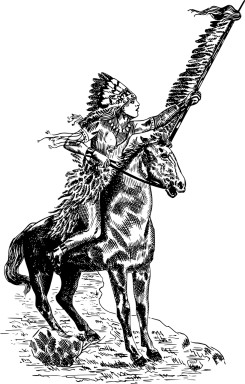
Chief Seattle (originally Si’ahl ) who lived between 1786 to 1866 remains one of the most famous Native Americans. Interestingly, the city of Seattle is named after him. True to his name, he was a chief of two native American tribes, the Suquamish and Duwamish tribes (one from his mother’s side and another from his father’s).
Renowned as a brave warrior and an effective orator, Seattle commanded great respect within his tribe and was influential on maintaining relations between the Native Americans and the European settlers. Today, he is chiefly remembered for a speech that he purportedly delivered in 1854 when the newly appointed Governor of Washington Territory, Issac Stevens came up with a government proposal to acquire Native Indian lands. A series of treaties were signed between various Native American tribes and the U.S government. Stevens approached Chief Seattle so as to gain the Suquamish and Duwamish tribes to sign the Treaty of Point Eliot which the Chief did, a year after delivering the famous speech.
It must be noted that that the origins and the authenticity of the speech itself is a highly debated topic. There are more than ten versions of the speech and it has undergone many changes in the hands of different people.
The first version written by H. A. Smith which appeared in The Seattle Sunday Star in, 1887 . This version is itself a highly doubtful work and is said to be a far cry from a good, faithful work of translation. Smith was supposedly present when the Chief Seattle made the speech. His article on the Seattle Star appeared as a recollection of the event almost thirty years after it took place. One look at the ornate Victorian language of the speech, and more importantly, his description of Chief Seattle is sufficient to demonstrate his proclivity towards hyperbole and exaggeration and one can safely assume that much of the speech was Smith’s own invention rather than the Chief’s actual words.
However despite questions about the authenticity of the text, one may appreciate the ideas it presents and the appeal it makes to acknowledge one another’s belief systems and ways of living. Read the Summary and Analysis of Chief Seattle’s Speech by clicking here.




